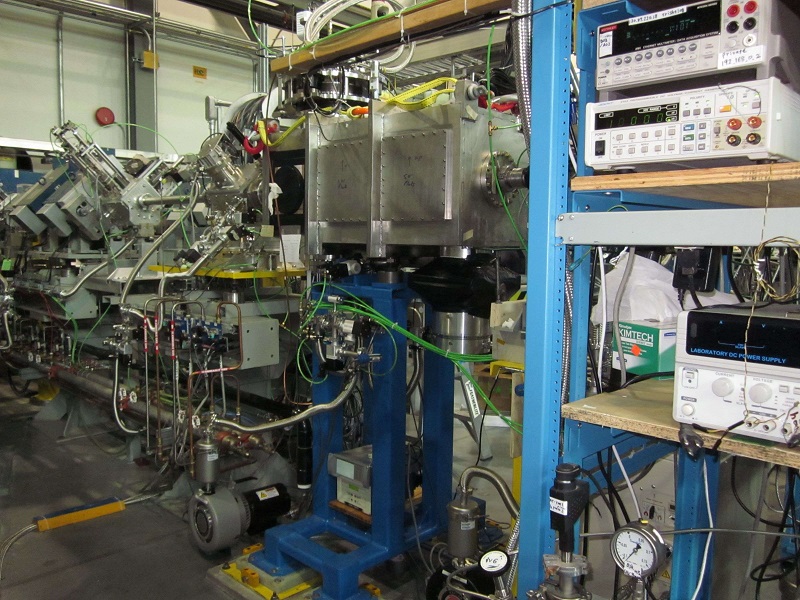19 March 2019
Stu Shepherd
Communications Specialist
t +1 604.222.7528
sshepherd@triumf.ca
Today, the Government of Canada reaffirmed its longstanding support for TRIUMF with the announcement of a $292.7M investment over five years to support laboratory operations. This funding represents the largest single investment in TRIUMF to date. It comes in response to the bold vision presented in TRIUMF’s recently published Five-Year Plan 2020-2025. Details of the new funding were included in the 2019 federal budget, which was announced today in Ottawa.
TRIUMF is grateful for this strong support and appreciates the Government of Canada’s sustained commitment to science and innovation. Today’s investment will bolster TRIUMF’s broad portfolio of activities across three core pillars: science and technology; people and skills; and innovation and collaboration. It builds on Canada’s strength in science and research and will help ensure the nation’s continued competitiveness in the global knowledge economy.
TRIUMF’s Five-Year Plan 2020-2025 lays out a blueprint for TRIUMF’s future, grounded in three state-of-the-art platforms:
The Advanced Rare Isotope Laboratory (ARIEL), a multidisciplinary research facility for isotope research in science, medicine, and business;

The Institute for Advanced Medical Isotopes (IAMI), a world-class centre for the research and development of new isotope-based medical technologies;

and
TRIUMF Innovations, a commercialization engine translating TRIUMF’s discoveries into commercial opportunities.
With this support, the laboratory will be well-positioned to realize its mission of delivering discovery and innovation, inspiration and education, and knowledge and opportunity for all. “Today’s announcement sends a strong message of support for Canadian science and its role in Canada’s research and innovation ecosystem,” said TRIUMF Director Dr. Jonathan Bagger. “TRIUMF’s vision is for Canada to lead not only in discovery but also in technology, innovation, and training, so that our country will continue to develop the people and skills necessary for translating science to society. These goals lie at the heart of our Five-Year Plan 2020-2025. We are grateful to the Canadian government for its show of confidence in our vision for Canada’s future.”
“This investment from the federal government will allow TRIUMF to realize its full potential,” said Dr. Digvir Jayas, Chair of the TRIUMF Board of Management. “By leveraging ARIEL, IAMI, and TRIUMF Innovations, TRIUMF will continue to be a global leader in translating science and technology into innovation and commercialization. Today’s announcement represents a major milestone for the lab’s community of university members, researchers, students, users, industry partners and collaborators, and for all the people the lab serves.”
“Five-Year Plan 2020-2025 is the product of extensive consultation with the Canadian research community, TRIUMF’s university members, and the laboratory’s large number of public and private-sector partners,” explained Dr. Reiner Kruecken, TRIUMF’s Deputy Director, Research. “The government’s ongoing support for the laboratory’s operations validates the direction set out the Plan, and TRIUMF looks forward to delivering impact to stakeholders across our multidisciplinary suite of programs.”
For more information about TRIUMF’s Five-Year Plan 2020-2025, please visit: https://fiveyearplan.triumf.ca/
See the full article here .

five-ways-keep-your-child-safe-school-shootings
Please help promote STEM in your local schools.

Triumf Campus
World Class Science at Triumf Lab, British Columbia, Canada
Canada’s national laboratory for particle and nuclear physics
Member Universities:
University of Alberta, University of British Columbia, Carleton University, University of Guelph, University of Manitoba, Université de Montréal, Simon Fraser University,
Queen’s University, University of Toronto, University of Victoria, York University. Not too shabby, eh?
Associate Members:
University of Calgary, McMaster University, University of Northern British Columbia, University of Regina, Saint Mary’s University, University of Winnipeg, How bad is that !!







































